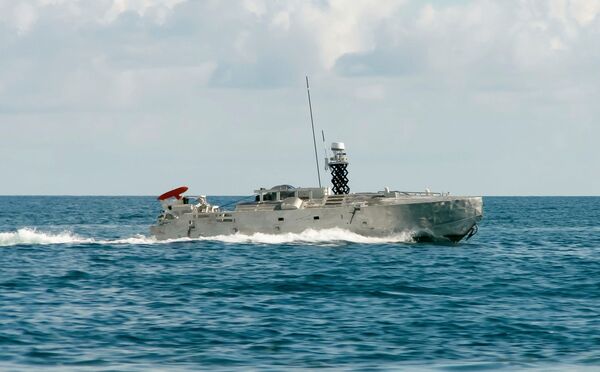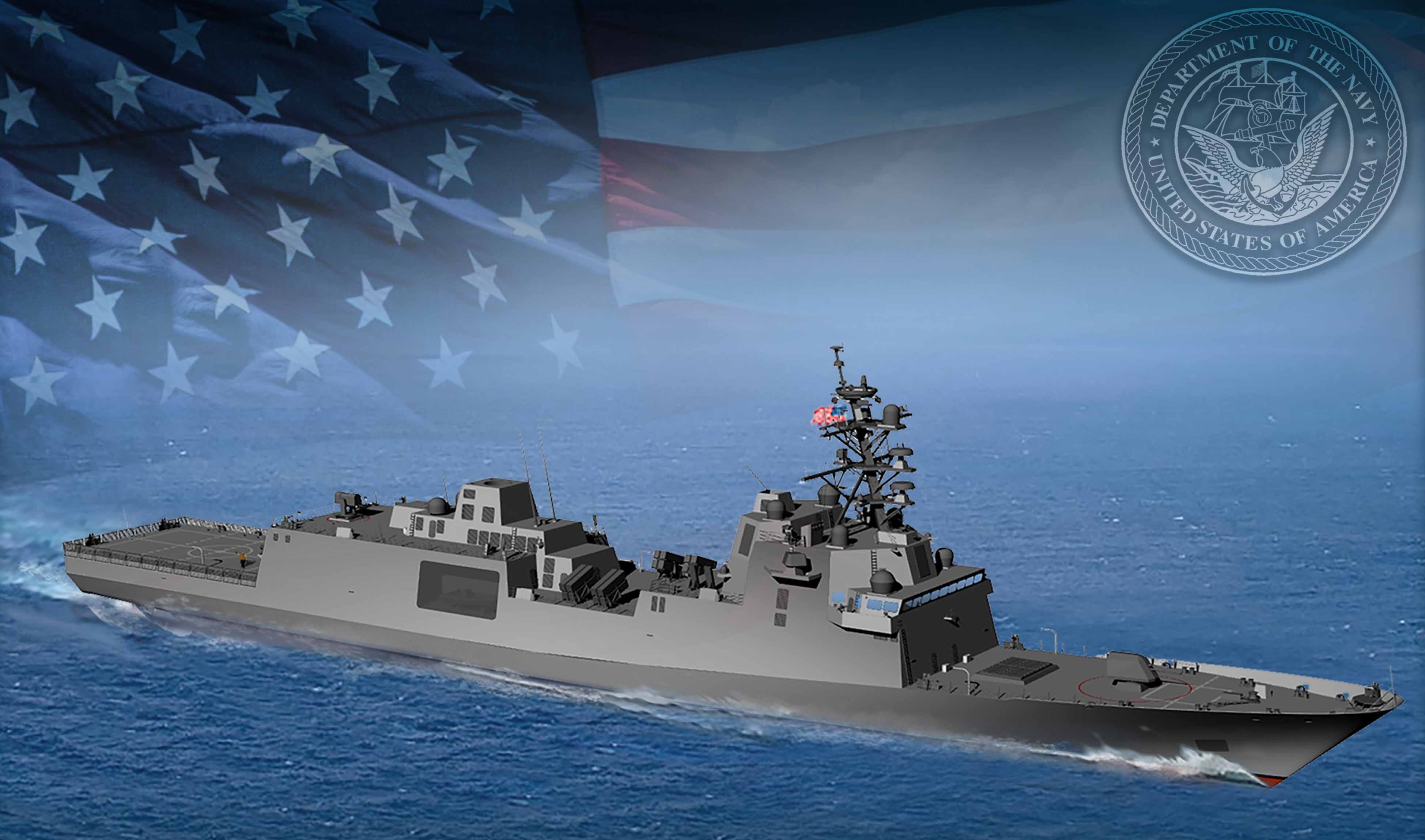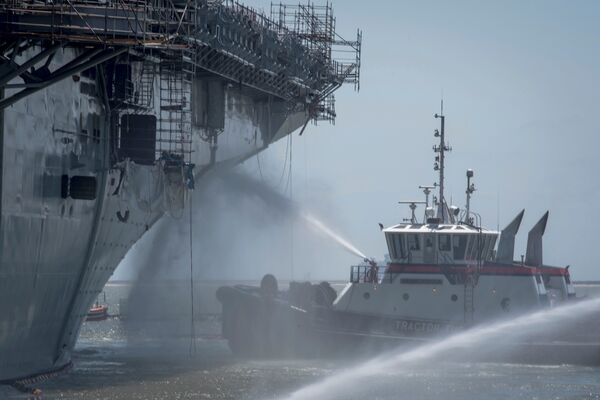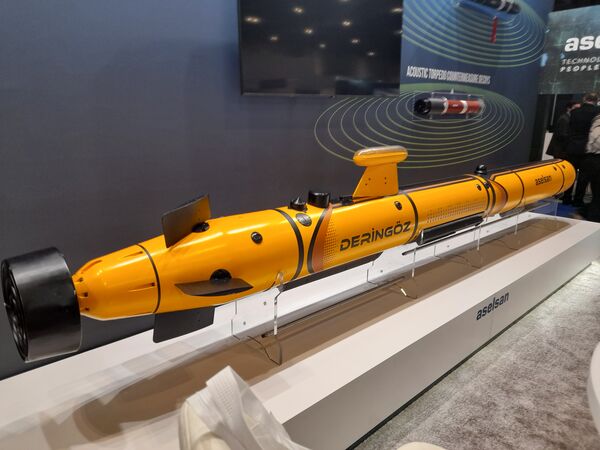- About
- Intara
- Capabilities
- Advisory
- Resources
- News
- Store
Pentagon budget 2023: LCS mission module continues apace as US Navy notes cost breach
18 May 2022
by Michael Fabey


The US Navy expects to reach initial operational capability in 2022 with the Littoral Combat Ship countermine mission module, which will employ unmanned surface vessels like this prototype developed by Textron. (US Navy)
Despite the officially required US Navy (USN) notification on 13 May of significant cost growth for Littoral Combat Ships (LCSs) Mission Module (MM) packages, programme officials say the work for remaining MMs is moving ahead as anticipated.
Navy spokesperson Captain Clayton Doss confirmed to Janes on 16 May that the USN notified Congress of an increase in Program Acquisition Unit Cost (PAUC) and Average Procurement Unit Cost (APUC) for the LCS MM programme that would exceed the original baseline estimate by at least 30% and the current baseline by at least 15%, breaching the so-called Nunn-McCurdy Provision in federal law that requires lawmakers be notified when cost growth meets those thresholds.
“Specifically, PAUC increased by 37.3% from the original baseline,” Capt Doss said. “PAUC increased by 18% and APUC increased by 17.2% from the current baseline.”
Keel laid for Constellation-class guided-missile frigate lead ship
16 April 2024
by Michael Fabey


The keel was laid for guided-missile frigate Constellation , the lead ship for the new class of surface ships. (US Navy)
The keel for the guided-missile frigate Constellation (FFG 62), the lead ship of the new Constellation-class of ships, was laid on 12 April, the US Navy (USN) confirmed.
Speaking at the keel-laying ceremony on the same day, USN Secretary Carlo Del Toro noted the need to augment the fleet with ships like FFGs, especially with recent events in the Red Sea.
“ Constellation and the Constellation-class frigates are a critical next step in the modernisation of our surface ship inventory, increasing the number of players on the field available globally for our fleet and combatant commanders,” Del Toro said during his speech, according to the USN.
“As recent events in the Red Sea and Indo-Pacific have shown, our ships, submarines, aircraft, sailors, and marines are in high demand by our national decision makers,” he said.
Testifying on 10 April before the House Appropriations Committee (HAC), Del Toro noted some of the fleet-relative technological enhancements being advanced in the frigate programme.
Navy League 2024: US Navy leadership touts amphibious-ship investments as cost and readiness concerns continue
15 April 2024
by Michael Fabey


The US Navy lost amphibious assault ship Bonhomme Richard to fire damage. (US Navy)
US Navy (USN) leaders are touting the investments being planned for the country's naval amphibious fleet and associated resources, even as government analysts are questioning the costs of some of these acquisitions and the navy is studying requirements and maintenance issues associated with amphibious forces.
Admiral Lisa Franchetti, the chief of naval operations (CNO), confirmed that the USN and the US Marine Corps (USMC) will review amphibious warship readiness and maintenance issues on 8 April during a discussion with reporters at the Navy League Sea-Air-Space 2024 global maritime exposition in National Harbor, Maryland.
The USMC could not fulfil US emergency-response force needs on two recent important occasions, Bryan Clark, senior fellow and director of the Center for Defense Concepts and Technology at Hudson Institute, told Janes on 31 March in an interview in advance of the symposium.
Marines had to forego disaster relief for Türkiye and the service could not provide similar amphibious operations for Noncombatant Evacuation Operations (NEO) for South Sudan, Clark noted.
With the loss of amphibious assault ship Bonhomme Richard
UDT 2024: Aselsan to start work on second Deringöz AUV variant
12 April 2024
by Kate Tringham


A full-scale model of Aselsan's first Deringöz AUV under development on display at UDT 2024. The company is set to start work on a smaller version this year. (Janes/Kate Tringham)
Aselsan has outlined plans to start expanding its family of Deringöz autonomous underwater vehicles (AUVs) this year as the first prototype under development progresses through its trials programme.
Speaking to Janes at the Undersea Defence Technology (UDT) 2024 conference and exhibition in London on 9 April, an Aselsan spokesperson told that the first prototype is making good progress following the successful completion of its first diving test in early March, and the company was optimistic that the system would complete development in the first or second quarter of 2025.
The AUV will conduct further navigation and guidance testing during April before progressing to trials in deeper water in May, the spokesperson said.
Meanwhile, the company is planning to start building a second, smaller version this year, which it aims to complete by 2026, according to the spokesperson. Aselsan is planning a family of three Deringöz AUVs in total, although no timeframe has yet been set for the development of the largest version.
Despite the officially required US Navy (USN) notification on 13 May of significant cost growth for ...
Latest Podcasts
A focus on Libya
In this podcast Janes senior analyst James Trigg, joins Harry Kemsley and Sean Corbett to discuss Libya. Historic civil and political unrest have made it a country of interest globally for decades. Whilst other conflicts and world events have fo...
Listen nowJanes Case Studies
Using Janes Intara to build a common intelligence picture: Russian build up on the Ukrainian border
View Case StudyNews Categories
 Weapons Details
Weapons Details